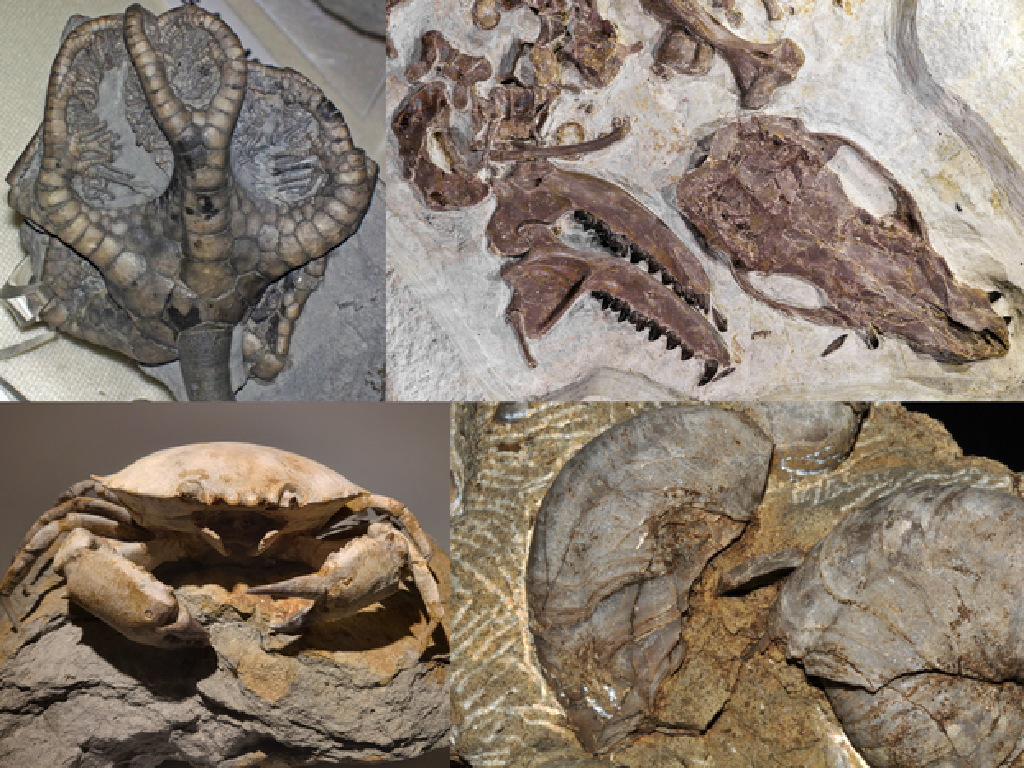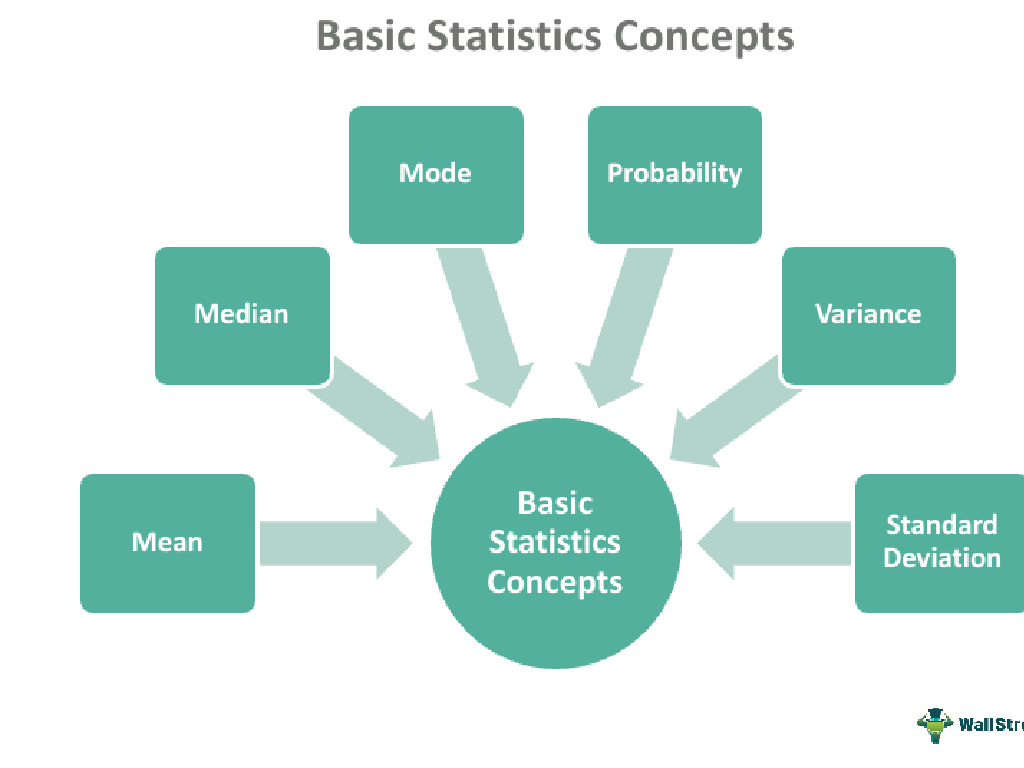Compare Percents To Fractions And Decimals
Subject: Math
Grade: Seventh grade
Topic: Percents
Please LOG IN to download the presentation. Access is available to registered users only.
View More Content
Welcome to Percents!
– Understanding the concept of percents
– A percent represents a part out of 100
– Percents in daily life
– Discounts, interest rates, and statistics
– Relating percents with fractions
– To convert a percent to a fraction, divide by 100
– Relating percents with decimals
– To convert a percent to a decimal, move the decimal point two places to the left
|
This slide introduces students to the concept of percents and their relevance in everyday situations. Percents are a fundamental part of mathematics, used to express proportions and comparisons. They are commonly encountered in scenarios like calculating discounts during shopping, understanding interest rates in banking, or interpreting statistical data. Today’s goal is to help students draw connections between percents, fractions, and decimals, which are different ways of expressing the same value. By learning to convert between these forms, students will gain a deeper understanding of how numbers can be represented and used in various contexts. Encourage students to think of examples where they have seen percents used in real life.
Understanding Percents
– Percent means ‘per hundred’
– 1% equals 1 out of 100
– Percents show relative size
– If a class has 25 students, and 50% are boys, that means 12.5 students are boys.
– Converting percents to fractions and decimals
– To convert, divide the percent by 100 for decimals, and for fractions, write over 100 and simplify.
|
This slide introduces the concept of percents to seventh-grade students, explaining that the term ‘percent’ is derived from the Latin ‘per centum,’ meaning ‘by the hundred.’ One percent is therefore one part in a hundred. Percents are used in various contexts to compare quantities, such as in discounts, statistics, and test scores. It’s crucial for students to understand how to convert percents into fractions and decimals since this skill is used in many real-life applications. For example, to convert 50% to a decimal, divide 50 by 100 to get 0.5, and to convert it to a fraction, write it as 50/100 which simplifies to 1/2. Provide additional examples and practice problems to reinforce the concept.
Comparing Percents and Fractions
– Every percent as a fraction
– Percent means ‘per 100’, so it’s like a fraction with 100 as the denominator
– Example: 50% equals 50/100
– 50% as a fraction is 50/100, which simplifies to 1/2
– Simplify fractions
– To simplify, divide the numerator and denominator by their greatest common divisor
– Practice with different percents
|
This slide introduces the concept that percents can be directly translated into fractions with a denominator of 100. It’s crucial for students to understand that ‘percent’ means ‘per 100’, making the conversion to fractions straightforward. By providing the example of 50%, which simplifies to 1/2, students can see the practical application of this concept. Encourage students to practice simplifying fractions to their lowest terms, as this skill is essential for comparing and converting between percents, fractions, and decimals. Have students practice with various percents to solidify their understanding.
Converting Percents to Decimals
– Percents to decimals conversion
– Move the decimal point two places to the left
– Divide percent by 100
– 75% / 100 = 0.75
– Example: 75% to decimal
– 75% is equivalent to 0.75
|
This slide aims to teach students the simple process of converting percents to decimals, which is a fundamental skill in understanding percentages. Emphasize that to convert a percent to a decimal, one must divide by 100, which is the same as moving the decimal point two places to the left. For example, 75% becomes 0.75. This is because ‘percent’ means ‘per hundred’. Make sure to provide additional examples and practice problems for the students to work through, reinforcing the concept. Encourage students to think of percents as money to help them grasp the concept of moving the decimal point (since $1.00 is 100 cents, $0.75 is 75 cents, or 75%).
Converting Fractions to Percents
– Convert fraction to decimal
– Divide numerator by denominator e.g., 1/2 becomes 0.5
– Multiply decimal by 100
– 0.5 becomes 50 when multiplied by 100
– Attach percent sign (%)
– Final result is 50%
|
This slide aims to teach students the process of converting fractions into percents. Start by explaining that a percent represents a part out of 100. To convert a fraction to a percent, students should first divide the numerator (top number) by the denominator (bottom number) to get a decimal. Next, they multiply the decimal by 100 to convert it to a percent. Finally, they add the percent sign to indicate that the number is a percent. Use examples like 1/2, which becomes 0.5 as a decimal and then 50% as a percent. Encourage students to practice with different fractions to become comfortable with the conversion process.
Converting Decimals to Percents
– Multiply decimal by 100
– To convert, shift decimal point two places to the right
– Add a percent sign (%)
– This signifies the percentage amount
– Example: 0.2 to 20%
– 0.2 is 20/100 or 20% after conversion
|
This slide is aimed at teaching students the simple process of converting decimals to percents, which is a fundamental skill in understanding percentages. Start by explaining that ‘percent’ means ‘out of 100’, so when we multiply a decimal by 100, we are essentially finding out how many out of 100 parts we have. Emphasize the importance of placing the percent sign to indicate that the number is now a percentage. Use the example of 0.2 to show the conversion process: multiplying by 100 shifts the decimal two places to the right, resulting in 20, and then we add the percent sign to get 20%. Encourage students to practice with different decimals to gain confidence in this conversion method.
Converting Between Percents, Fractions, and Decimals
– Convert 25% to fraction/decimal
– 25% equals 1/4 or 0.25
– Change 3/4 to percent/decimal
– 3/4 equals 75% or 0.75
– Turn 0.5 to fraction/percent
– 0.5 equals 1/2 or 50%
|
This slide provides practice examples for students to apply their knowledge of converting between percents, fractions, and decimals. For the first example, students should recognize that 25% is equivalent to 25/100, which simplifies to 1/4, and as a decimal, it is 0.25. The second example requires students to convert the fraction 3/4 to a percent by finding what part of 100 the numerator is, which is 75%, and as a decimal, it is 0.75. The last example involves converting the decimal 0.5 to a fraction, which is 1/2, and to a percent, which is 50%. Encourage students to show their work step by step and to check their answers by reversing the process. This exercise will help solidify their understanding of the relationship between these three numerical representations.
Class Activity: Exploring Percents, Fractions, and Decimals
– Pair up with a classmate
– Find classroom items to analyze
– Record each item’s fraction, decimal, and percent
– For example, if 2 out of 5 desks are blue, the fraction is 2/5, the decimal is 0.4, and the percent is 40%
– Share your findings with the class
|
This interactive activity is designed to help students apply their knowledge of percents, fractions, and decimals in a real-world context. By working in pairs, students will engage in cooperative learning, enhancing their understanding through discussion and collaboration. Instruct students to select various items in the classroom and determine the fraction that represents a particular characteristic of the item, then convert that fraction to a decimal and a percent. Encourage them to use calculators if necessary. After completing their analysis, each pair will present their findings, fostering a collaborative learning environment. This activity will also help students to visualize and better grasp the relationship between fractions, decimals, and percents.
Wrapping Up: Percents, Fractions, and Decimals
– Review today’s key concepts
– Homework: 10 fraction conversions
– Convert each fraction to a percent and a decimal
– Understand conversion methods
– Use division and multiplication for conversions
– Get ready for the next quiz
|
As we conclude today’s lesson on comparing percents to fractions and decimals, it’s important for students to solidify their understanding by practicing conversions at home. The homework involves converting 10 different fractions to both percents and decimals, reinforcing the methods we’ve learned in class. Remind students to use division to convert a fraction to a decimal and then multiply by 100 to find the percent. This exercise will prepare them for the upcoming quiz, where they will need to demonstrate proficiency in these conversions. Encourage students to ask questions now if they’re unsure about any concepts from today’s lesson.






